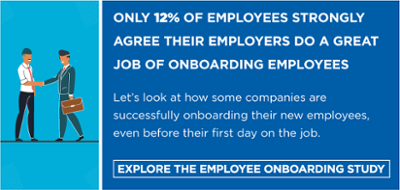
Your next hire is important! Right?
It’s probably one of the top reasons managers tell me their job is hard. Finding talented people is difficult, and once you find them, hiring them and getting them onboarded is time-consuming and stressful.
You have a lot to do, but investing time and energy in a few important onboarding disciplines can give you and your new hire a better chance for success.
What To Do Immediately After Hiring
I remember when I was starting in media sales. It was my second sales job, and I was nervous about how I would get up and running. I would work with a team of super-talented and tenured AE’s.
I remember it well because they went out of their way to make sure I felt part of their “family” before I even started. It made me want to perform; it made me want to listen, learn, and push to do my very best.
Here are a few examples of simple but impactful disciplines that can help you and your new hire get going fast!
Welcome Note and Introduction
- Send a Handwritten Welcome Note: Mail it to them immediately after the offer letter is signed.
- Share Interesting Facts: Share interesting facts about the new hire with the team, including reasons you hired them.
- Encourage Team Connection: Encourage the team to connect with their new coworker and provide contact information.
Onboarding Essentials
- Assign a Work Mentor/Buddy: Assign them a work mentor/buddy who can help them navigate their onboarding.
- Access to Onboarding Materials: Give them access to your company's onboarding materials (preferably online).
- Organizational Information: Provide an org chart or team roster with names and photos.
- First-Day Logistics: Provide information on where to park, which entrance to use, and who to contact when they first arrive.
- Dress Code Guidance: If applicable, provide information on the employee dress code with specific details and example photos.
- Post-Arrival Messages: Add to your calendar to send short messages after they arrive, like "We are thrilled to have you here!"
Preparation for First Day
- Workspace and Equipment: If there are options for workspace/equipment, ask for their preferences.
- Office Access Setup: Set up their office access, including badges, keys, and parking passes.
- Welcome Gift and Swag: Invite your new hire to complete a questionnaire for a small welcome gift and company swag.
Arrival Announcement
- First-Day Greetings: Let everyone know when to expect and greet them on their first day.
- Team Introduction: Let the team know when the new hire is arriving and when/where they should meet.
- Digital Introduction: Add the new hire's name and photograph to the marquee or digital screens, and if remote, have a virtual coffee time with the team to introduce your new hire.
First-Day Activities
- Casual Morning Meeting: Arrange for a casual coffee, tea, or light breakfast with their hiring manager, team, and company leadership for introductions.
- Office Tour: Determine who will give them a tour of the office and provide details like security codes.
- Team Lunch: Plan a casual team lunch with their team, other leaders, and HR. Have people share "campfire stories" about their time at the company.
End of Day Check-In
- End-of-Day Check-In: Schedule time to check in with them toward the end of the day to see how they are doing and share what is planned for the rest of their first week.
- Assignments for the Week: Determine who will play a role in their first week and give them a specific assignment.
Ongoing Support
- Work Buddy Check-In: Arrange for their work buddy to check in with them, answer questions, and provide their own perspective.
- Feedback and Adjustments: Ask them for feedback on their onboarding so far and make adjustments if needed.
- Initial Measures of Success: Define and share the initial measures of success for the 30-day mark.
- Scheduled Check-Ins: Schedule a 30, 60, and 90-day check-in on your calendar to recognize successes and identify areas where they may need additional help.
- Role Understanding Appointments: Have them schedule short appointments with key staff members you assign to better understand their role and build a list of questions they can ask. Debrief after.
- Company Culture Insights: Give them the information they need on acronyms, nicknames, and company jargon.
- Rules of Engagement: Provide the "rules of engagement" so they understand the unwritten rules of your company and team etiquette.
Conclusion
It may sound like a lot, and you are busy, but taking the time to implement these onboarding practices will yield enthusiastic, engaged, and high-performing new hires who meet or exceed your expectations.






